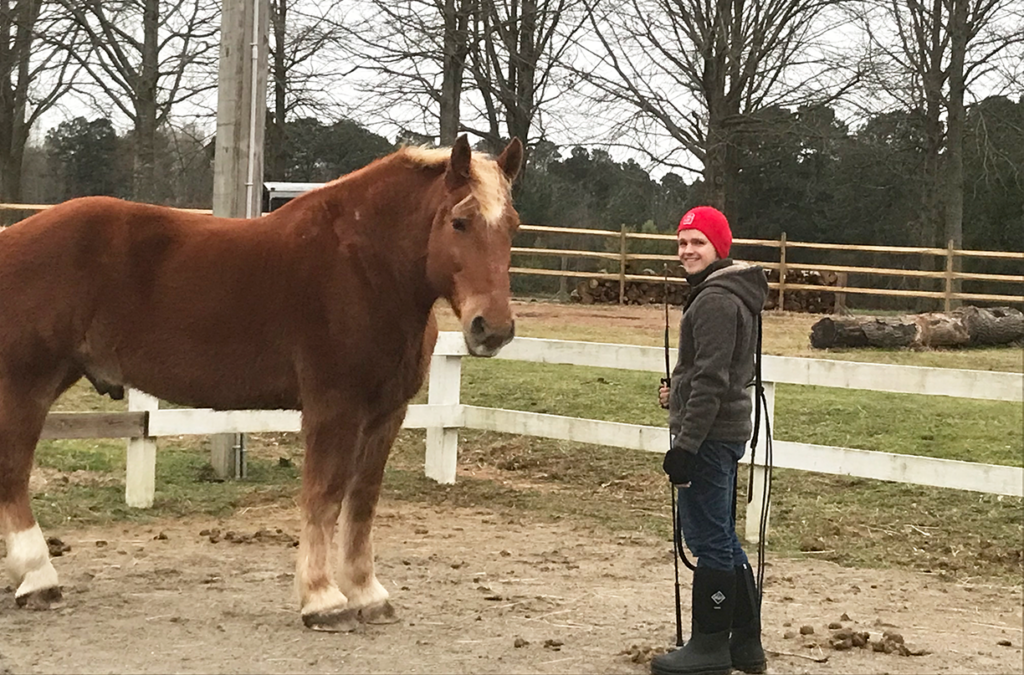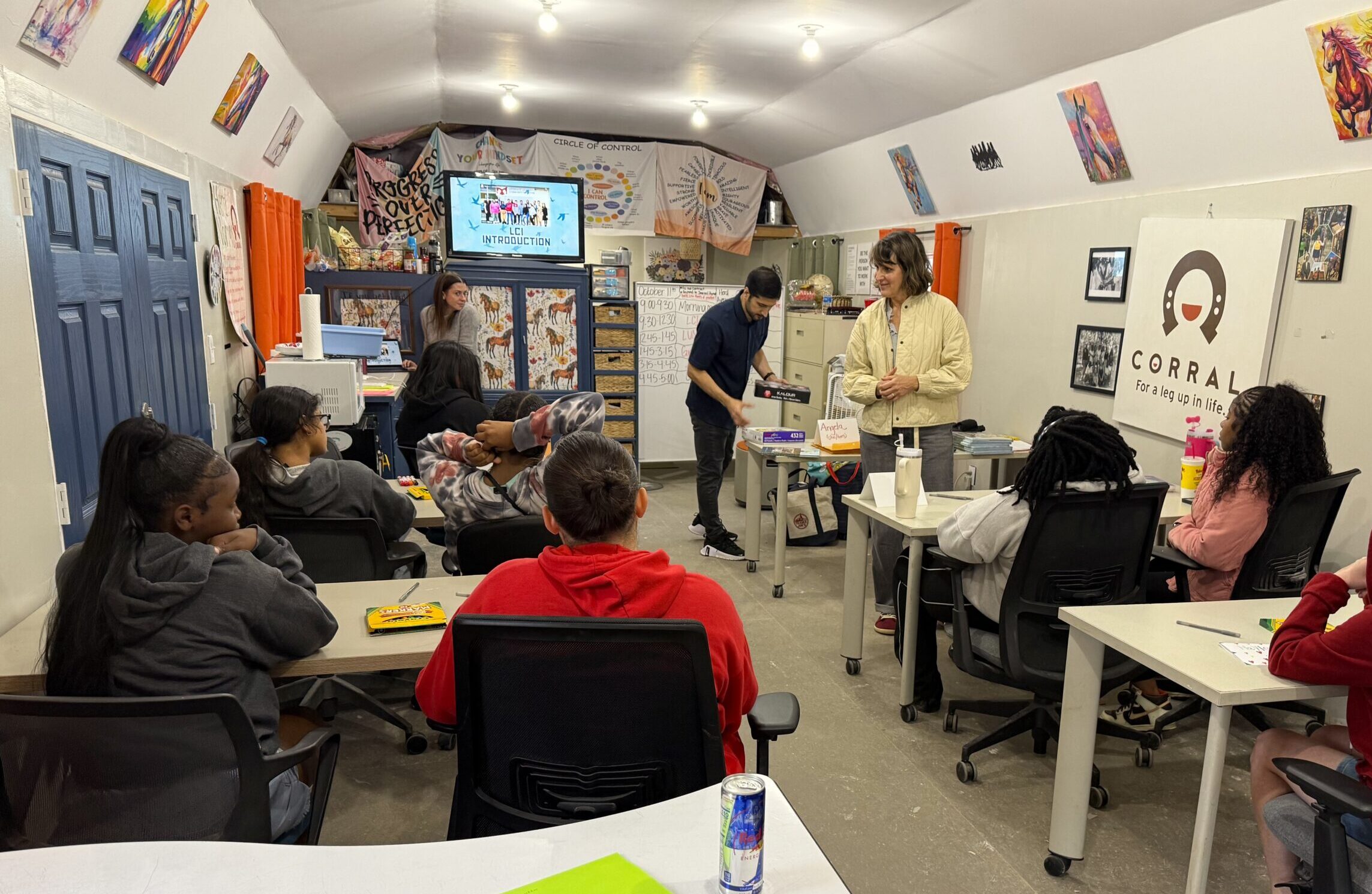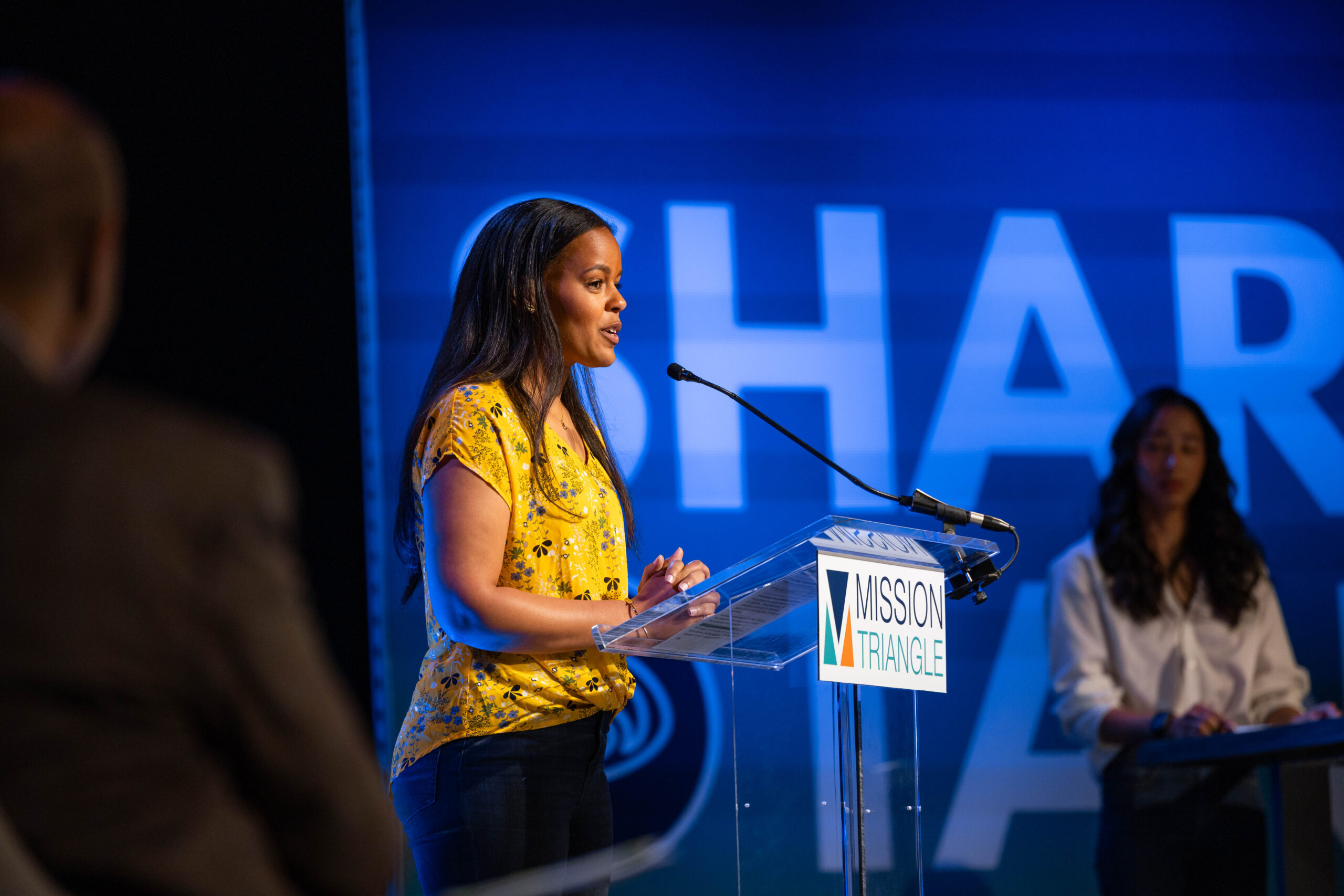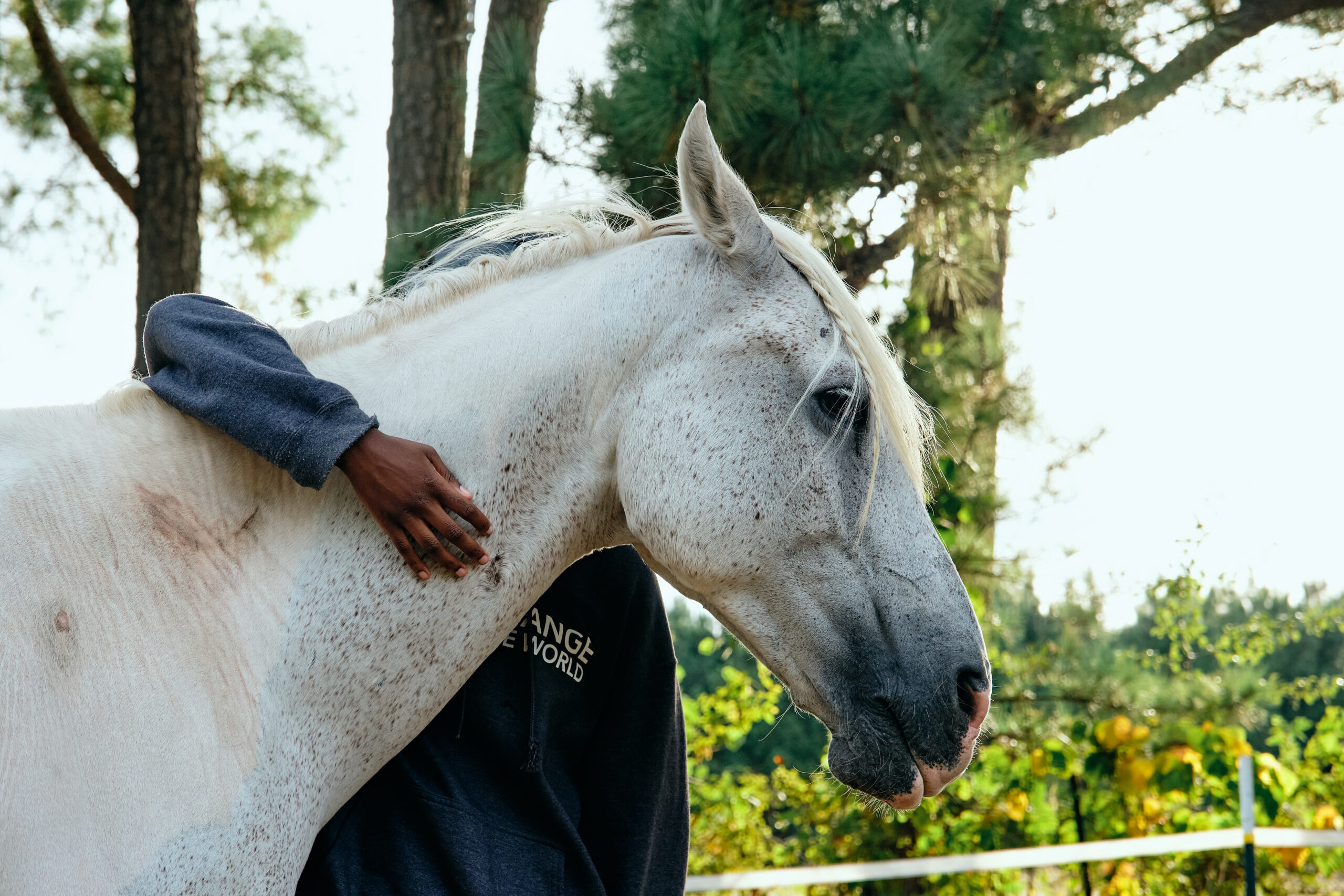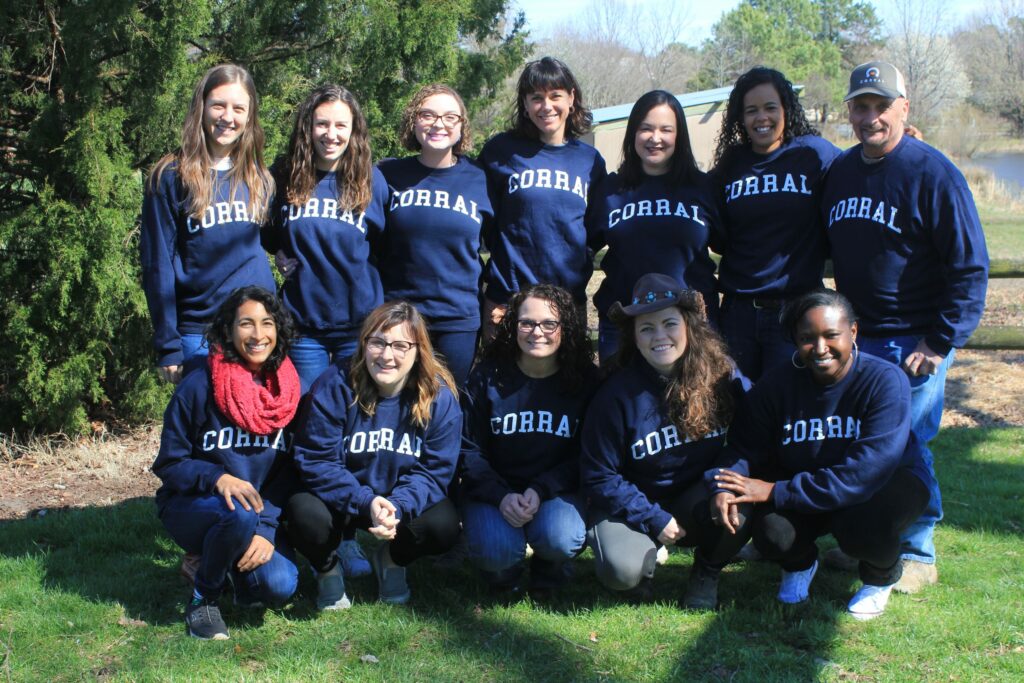Have you ever stopped and thought about how riding feels to your horse? How vulnerable the horse feels once a person is on their back and their only means of escape, running, is gone? Imagine the amount of trust that horse must have for the rider.
The first time I ever thought about the trust needed between horse and rider was at a 4-H event my mom had organized. She had planned several riding games for us all to play (turns out they were more than just games, my mom managed to sneak in valuable life lessons as well). One of the events she had planned was to have each rider be blindfolded on their horse, while a partner navigated them through an obstacle course using verbal communication. When it was my turn to ride, I was completely dumbstruck at how helpless I became to guide my horse through the course without my sight. Completing the course required my absolute, blind trust in both my partner and horse.
Luckily, CORRAL does not blindfold the girls on horseback to teach them lessons about trust, instead they let the horses dictate these lessons.
In my last session with Bob, we started working through some of our communication issues and CORRAL’s equine manager Leanne proposed that Bob and I should explore the strength of our connection by riding. Naturally, the idea of riding a horse for the first time in over five years was all I could think about prior to my session with Bob. My plan from the start of our lesson was to ride Bob, and I never paid a second thought to our relationship or building trust.
Starting the session, I put my helmet on and marched to the pasture to request Bob’s attention and participation in this quest. After Bob agreed to join me, we headed into the arena where I would evaluate our relationship with several important yields. These yields consist of preliminary groundwork that asks the horse some simple questions, will you back-up when asked? Turn your head right? How about left? Now, can we yield the front shoulder? What about the haunches? These tasks enable Bob and I to establish effective communication and inform us about the quality of our relationship (i.e. Are we ready to ride?).

Initially, Bob and I began our session using a halter and lead rope (similar to how I had worked with horses growing up), but Leanne informed me that the relationship needs to be formed at liberty. This means I have to convince Bob to willingly move across the arena, stand next to a mounting block, and then stand still while I climb on his back without using a halter and lead rope.
Sound impossible? It did to me too, but every week the CORRAL girls demonstrate that riding at liberty is possible! So, Bob’s halter was taken off (pride and determination kept my helmet on) and we began building our relationship.
Bob and I began working in the arena by backing up to set boundaries. Then we focused on detachment and attachment. Detachment means maintaining connection while the horse is away from you; while attachment happens when you and your horse work in close proximity to one another. After Bob had demonstrated these principles to me, I felt ready to move towards a mounting block and try riding Bob. This is when we encountered our first major roadblock.
Horses are herd animals and, naturally, Bob did not want to leave his friends at the front of the arena, who provide preexisting relationships and safety for him. We would start walking to the far end of the arena (where the mounting block was located), but at the midway point Bob would stop, turn around, and return to the front of the arena. I would run back, re-establish our relationship and attempt to navigate the two of us back to the mounting block. Sometimes I tried to walk him down the fence line, using the fence and myself as boundaries to stop him from turning. Other times, when Bob would start to head back, I would attempt to redirect him by asking Bob to turn in a full circle. At the time, I felt like these games had little or no impact on Bob’s decision making to return to the front of the arena. But, each time we started back towards the mounting block, we got a little closer. Working with horses is a game of inches, not miles.
What about my plans for riding?
Bob and I never made it to the mounting block that day. He had decided that he could not rely on me away from his herd and, consequently, could not accept me on his back. Instead, we focused on strengthening our connection through groundwork and I learned a valuable lesson in patience. A relationship, whether formed between people or, horse and rider, requires patience, time, and trust. Ultimately, the horses teach us how to build trust in a relationship by listening to their feedback.

About the Author:
George Van Den Driessche grew up training horses to ride and drive on a small farm in Michigan. Volunteering as an Equine Specialist (ES) with CORRAL has allowed him to return to his passion of working with horses. He is currently pursuing his PhD in Cheminformatics at NC State where he uses computer models to predict drug activity. George also interns with NC State News as a science journalist. You can follow his research and writing career on Twitter at @George_V14. He and his wife live in Cary with their two dogs — Athena and Mowgli.

